A business team strategizes marketing campaigns to promote company goals, raise awareness about a new product, or capture customer feedback. Typically, they aim to reach targeted consumers in many ways, involving an amalgamation of social media, email marketing, pay-per-click, print advertising, and television promos.
Marketing campaigns tend to connect a series of operations designed to bring about a specific result. Great promotional blueprints follow a consistent theme and launch a single more focused goal. Let’s take Nike, for example. Every advert you see or hear for the brand is not part of a campaign. However, if you scroll past an email or Nike sponsored Instagram post, you have come across a marketing campaign.
While advertising is one of the essential components of marketing, the latter is how an organization plans to place its product on the map. If Nike were campaigning about releasing the new shoe, their advertising efforts would encompass paid search and social media more.
So, campaigns are focused on marketing efforts to reach a single goal. Despite their simple concept, marketing campaigns can take a lot of thought and input to pull through successfully.
In this article
- Digital Marketing: The Worldly Dynamic
- 1. Seasonal Marketing
- 2. Cause Marketing
- 3. Affinity Marketing and Co-branding
- 4. The Outbound Campaign
- 5. Inbound Marketing
- 6. Social Networks And Viral Marketing
- 7. Email Campaign
- 8. PPC – Pay Per Click
- 9. Affiliate Marketing
- Marketing Campaigns: Vitality for Businesses
- Evaluating Your Strategy
Digital Marketing: The Worldly Dynamic
The contemporary marketing realm is dynamic and ever-changing, with tactics, technological means, and trends never being stagnant. It is critical for your business to stay ahead of the curve since falling behind the “giant” competitors is the last thing you want. A great way to get with the times is to keep a close eye on marketing statistics.

According to the bar graph shown above, blogs are amongst the primary forms of online media used in content strategies. Around 70 percent of marketers invest actively in content marketing to create and share downloadable visuals for their audience.
Content marketing statistics provide insight into how content marketers are filling the strategic gaps and generating leads for their target consumers. In this way, your business can assess the techniques that will work best for your customers.
A marketing campaign is a staple for any company’s growth and increased brand awareness. However, there is a big list to choose from, and the type you pick should be specific to the organization’s mission. Mentioned ahead are the “solid nine” strategic campaigns to help you get started.
1. Seasonal Marketing
Seasonal events and opportunities can mean different things for businesses. For many organizations, seasonal options are commercially critical times for finances. Planning an effective seasonal campaign does not only need careful planning but equally strenuous organizing. For this reason, smaller brands let most of the marketing chances go.
As with any marketing campaign, nailing down the message is vital. To help you get an idea, you should be thinking about the emotions you want to evoke in the audience, the customer journey, a story you want to tell, and an essential call-to-action.
Seven years ago, MegaRed – a company that sells krill oil supplements for the heart – launched a captivating digital Valentine’s Day campaign. The campaign’s basis was straightforward with a posing question, “Whose Heart Do You Love?” It consisted of an emotion-filled video urging its viewers to send their loved ones a healthy heart dose by applying for a free sample of MegaRed on its Facebook page. In return, the brand would send a free sample to its users.
As an additional tug to the heartstrings, MegaRed also promised to donate $100,000 to the National Coalition for Women With Heart Disease once they reach a claim of 100,000 samples.

When it comes to seasonal messaging, this campaign hits all the points mentioned before:
- Focuses on new customer acquisition
- Evokes empathic emotions (pushes the universal agenda of heart health)
- Calls to act by providing a free sample
Steps to create a seasonal marketing campaign
When working on the seasonal marketing campaign, keep the following steps in mind:
- Determine your goal: What do you seek from this campaign?
- Research your audience: If your targeted users do not engage with the season itself, you cannot expect to see results from a campaign centered on it. Getting acquainted with your customers is a trick towards effective marketing.
- Research your competitors: Thoroughly analyze how competitors are reaching out. How are they evoking emotions? What is the type of content they use? Which approach brought the most rewards?
- Work on the basics: Once you have pinned down the essential seasons, start planning. What are you hoping to sell? What would be the relevant channels? Schedule your content and make sure your website can handle a heavy influx of traffic.
Seeking guidance from notable brands may help you in a great way. Miinto, for instance, sets a high seasonal marketing bar when it brought the idea of offering early access to Black Friday deals.
2. Cause Marketing
Believe it or not, people love their community and are willing to give back. They love knowing that their contributions help further a charitable cause, the kind of benevolence that keeps them grounded.
Hence, partnering with a non-profit serves as a viable marketing strategy. You are putting your services to fair use by helping customers work for the greater good.
A cause marketing strategy needs a partnership that serves both parties: the contributor and your business. For example, your team decides to create an online course on spirituality, so partnering with a religious group or the church would make profit serving more constructive. You can even ask customers to add a donation amount to their purchases.
Perks of supporting a cause
According to the Edelman 2018 Earned Brand Study, 1 in 2 consumers is a belief-driven buyer. The co-founder and CEO of AdRobin, Saaru Saadeh, said it’s vital for a small business to tell the world how you are a positive force.
In an interview with Smallbiztrends, he pointed at three main benefits of cause marketing:
- It helps the world – By supporting a cause, you are helping the world to become a better place
- It adds purpose to your marketing – It opens avenues to new conversation topics with your target customers
- It can be low cost – Generally, primary forms of cause marketing are inexpensive
If you want to nail a cause campaign, ensuring it serves the purpose, you need to form a clear link between your business and the cause. You can also work with a non-profit that works towards providing clean drinking water to underdeveloped communities or fighting childhood obesity.
Gillette recently came up with an incredible idea to support the #MeToo movement. They changed their slogan to “the best men can be,” demonstrating support for the victims of sexual harassment. The short film went viral, and its Facebook version amassed over 11 million views in eight months.
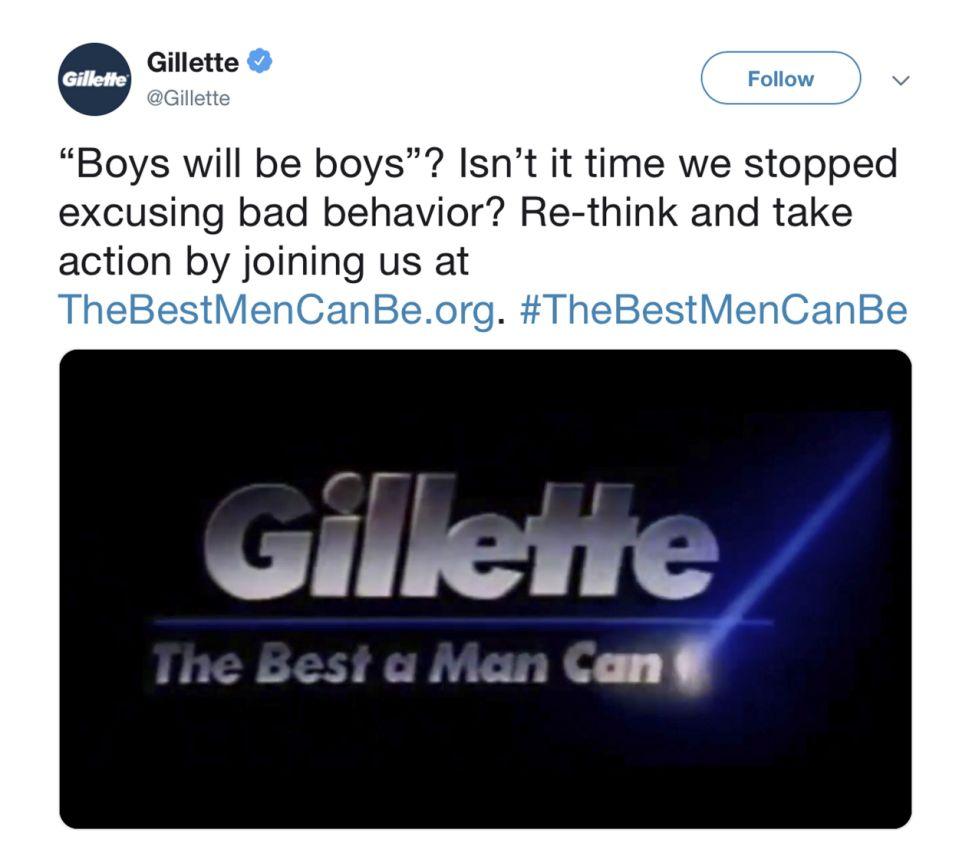
Cause marketing is, thus, a brilliant way to impress your consumer base.
3. Affinity Marketing and Co-branding
While you share an audience with your competitors, you also share the same circle with companies that complement your services. For example, a start-up brand that sells fitness courses would also share an audience with a digital set-up that promotes nutrition.
Co-branding or affinity is a marketing strategy that involves partnering of organizations that share common interests and consumers. Since they are not direct competitors, the gain to each other’s followers is immense, along with an affirmation towards better profit-making.
The home furnishing brand Pottery Barn and paint company Sherwin-Williams gained attention when they partnered back in 2013. They created an exclusive line of shades and added a new section to the Pottery Barn website. It helped customers pick the colors that complement their home furnishing choices.
Steps to create an effective co-branding strategy
Of course, working out a highly profitable co-branding strategy needs careful planning. Here are some steps that will help:
Choose the right partner for mutual benefits – You must examine how the campaign brings value to each participant in the partnership. The Red Bull/GoPro partnership was a success because both brands have the same adrenaline-seeking audience. Plus, they have a strong association with high-level thrills.
- Plan a strategic partnership – Work out clear goals. Create the messages you want to convey, channels you will use, and the timeline.
- Communicate smoothly with all parties – You must make decisions in real-time and share essential information.
- Test and tweak the campaigns together – You should closely track your engagement metrics to know how the audience is appreciating the movement. If necessary, introducing some changes might turn out favorable.
Affinity marketing also sells co-developed products, highlighting two distinct marketing blueprints. Let’s say your team joins an e-education entrepreneur and creates a course together. The finance meter might show an increase in sales due to pooled audiences.
4. The Outbound Campaign
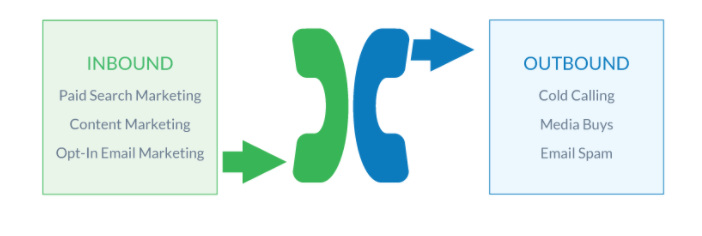
Outbound marketing is the first thing that comes to mind when you hear of radio ads, television drills, and printed advertisements. The main idea is to push your message across a large audience to captivate and convince them of your service’s benefits.
Escalate the impact of outbound campaigns
Many campaign ads try to be innovative but cannot communicate the essential points about their brand, hence deriving zero value.
As an outbound marketer, make sure to share three things in your running advert:
- The offering
- Why should the consumer want it
- Benefit it has in store for the buyer
If you are promoting a quoted price, mention the digits in the advertising but in the case of service, try explaining to the user how they can make the most out of choosing your brand.
A unique outbound campaign is your ultimate savior
As per Hubspot research, marketers worldwide agree that traditional paid advertisement is the #1 most overrated marketing strategy.
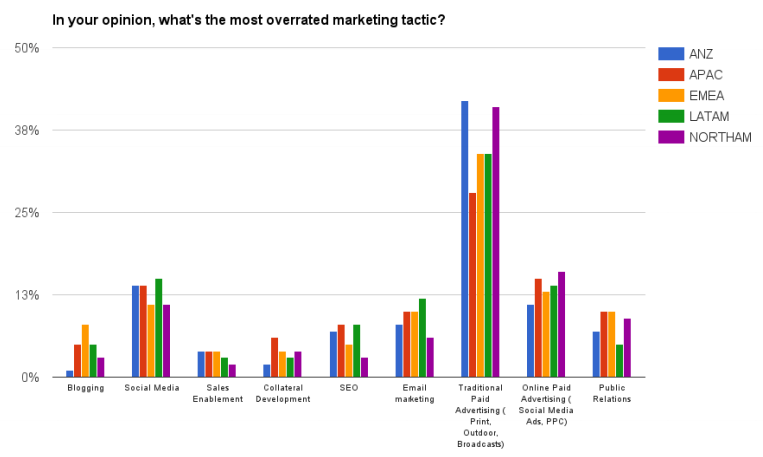
However, this is not the case if you know how to stand out.
With our shrinking attention spans, getting bombarded by advertising messages is not always a good deal. Whether it is an email message or a passing-by billboard, an ad has less than three seconds to grab our attention. It is a good idea to know what’s happening in the landscape before running an ad.
By studying the competitor’s look and differentiating messages, your brand will substantially stick out, keeping the consumer attention intact.
5. Inbound Marketing
Inbound marketing is all about unleashing your creative demons on developing content for a product. The process attracts potential consumers through a digital promo-pack before they can buy the basic service.
New business ventures mostly use inbound marketing for its cost-effectiveness and serving to convert the general audience into a loyal clientele. According to CRM Daily, nearly half of the companies that implement inbound marketing efforts see a 25% greater return on investment (ROI) on those programs than companies that don’t.
Critical elements of an effective inbound strategy
- SEO – It is the process of optimizing your website to rank organically on the Search Engine Results Page.
- Social Media Marketing – It involves branching out on various social platforms to interact with the prospects.
- Pay-Per-Click Marketing – It is when a company pays to get their ads up on a page. You can bid on specific keywords to attract high-quality leads.
- Content Marketing – This is when a firm designs useful and valuable content to convert leads.

MyProtein has taken inbound practices to the next level by mixing targeted Google Ads with specific content. The paid ads lead people to informative blogs, devising a streamlined lead generation strategy.
To sum it up, inbound marketing is a collection of many other digital marketing methods such as guest posting, generating leads, creating a target persona with free content, and building an influencer marketing image, amongst different ways to attain successful outcomes.
6. Social Networks And Viral Marketing
As a marketer, you cannot predict what type of content will spread quickly through referrals, social shares, and emails or, in order words, “go viral.” There is no definitive formula or social media algorithm to determine which type of route – YouTube video or blog article – will become instantly famous.
Analyze and rectify the emotions you tend to evoke
We know for sure that emotion is tied to giving, but does it matter when sharing online?
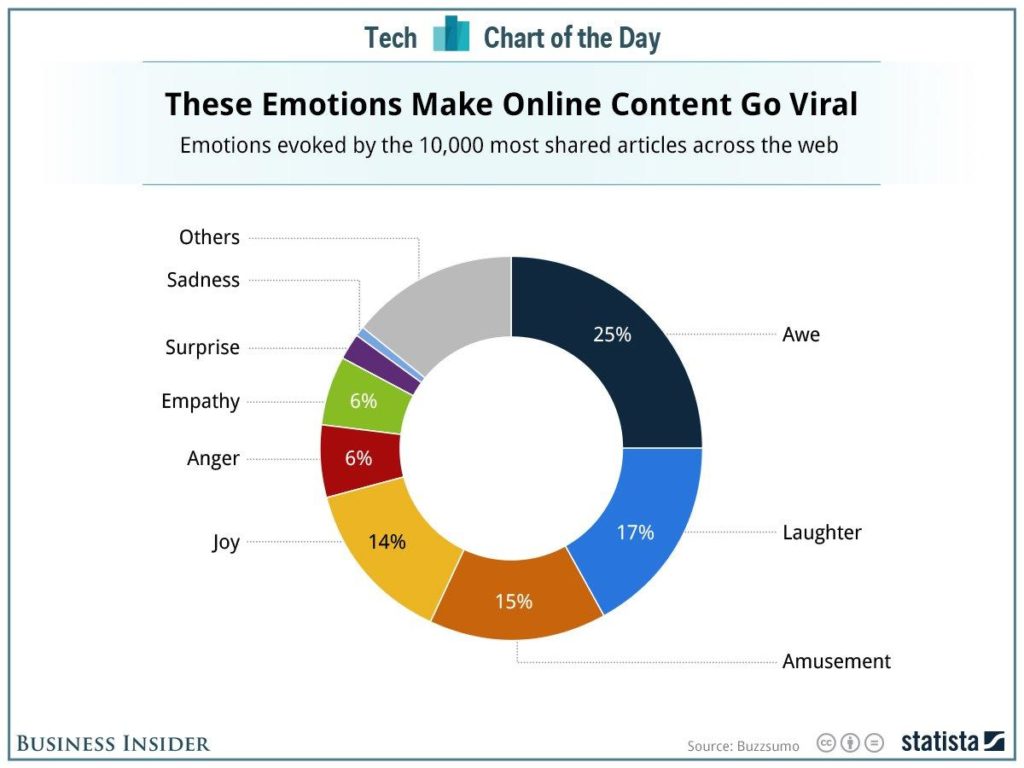
According to the chart above, awe, laughter, and amusement are the primary emotions evoked by the top 10% of the most shared posts.
Nonetheless, virality can be a double-edged sword. A marketer must always evaluate the campaign from all angles to ensure the message does not convey wrong ideas. Snapchat, for instance, has lost popularity for increasing pop-up ads. Typically, brands keep the ads relevant with their genre, but Snapchat fell into a vast pit of criticism when they showed an ad for a game called “Would you rather?”

This ad directly relates to the domestic abuse case from 2009, where Chris Brown assaulted Rhianna.
So bear in mind, social media is a means of evaluating consumer emotions and playing on its borders for success. Use visual imagery and humor to get your brand in front of as many people as possible to get the best sale outcome – the ultimate goal.
7. Email Campaign
The power of marketing emails has been undermined by the contemporary business sphere. It is time to forget any and all news to the contrary. Email is alive and kicking, and if you know how to use it right, it will help you grow exponentially in your business.
The Demand Metric study says that email had a median return on investment (ROI) of 122 percent – four times higher than any other marketing domain.
How to maximize ROI on Email marketing?
The trick to master ROI is solidifying the foundations.
- First, you must make sure your emails get delivered to the client’s inbox
- Secondly, generate engagement, so your messages are read, and the prospect takes action you have requested for
- Lastly, automate the entire process for boosted efficacy
According to Campaign Monitor, every $1 spent on email marketing typically generates about $38 in ROI. One reason is its interactive nature and personalized content.
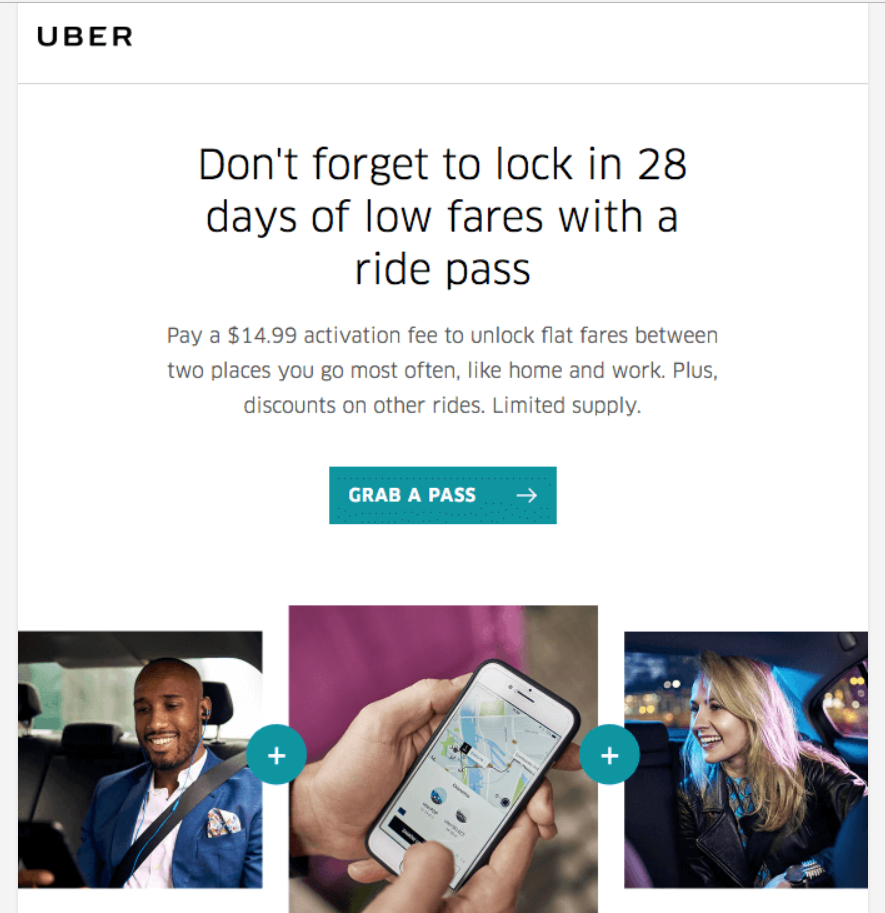
Uber’s email campaign gives us a lot to learn from. The text is brief with a clear CTA and filled with information apt for each user.
8. PPC – Pay Per Click
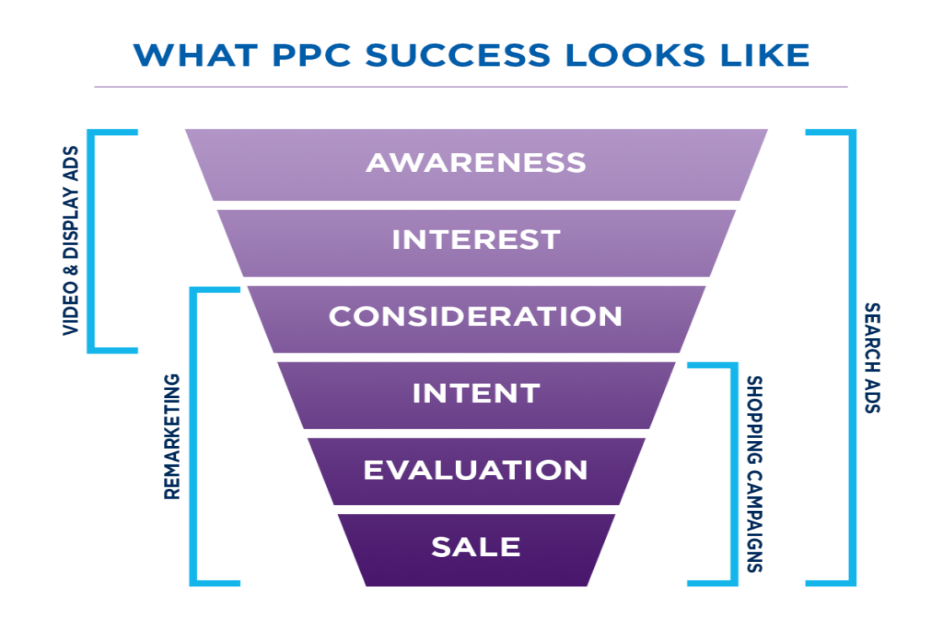
The image above suggests that a paid ad gets 65% of all clicks for high commercial searches. Pay per click or PPC is an infamous but effective online marketing method where brands pay money to have themselves known. A fixed amount is delivered every time their content or link is clicked upon.
PPC Categories
Pay-per-click advertisements are divided into two main categories:
- Those appearing on web pages
- Those appearing on SERPs
The creation of the actual ad depends on the PPC advertisers, as this is part of the fee they charge.
What makes a successful PPC?
When it comes to the PPC campaign, an organization’s return depends on its willingness to invest. No doubt, this may burden the company for spending more money and lay restrictions due to financial constraints, but it will allow the firm to plan a weekly or monthly goal which they can use to measure their performance. The cost per click can be compared to the amount earned through an actual buyer, making for simplified profit calculation.

The commercial broadcaster talkSPORT hired the search agency Guava to boost their website visits. The search agency aimed to develop widgets to present content in a new and engaging manner. Within four months, the website was receiving 800,000 visits a month.
This proves that if researched and implemented correctly, pay per click advertising can bear fruit for your brand. It targets the land of potential customers within a short period. To maximize the success of this method, optimize the advert through both visual and contextual terms, and review a bot protection solution to learn how to protect against click fraud.
9. Affiliate Marketing
Affiliate Marketing is when a brand promotes products or services of other brands. They earn a commission if people end up buying due to their efforts. It works on the concept of revenue sharing when you have no product and want to make money. So you promote a product that has value and earn an income as an affiliate marketer.
According to a Forrester report, 81% of advertisers and 84% of publishers use affiliate marketing.
Steps to get started with affiliate marketing
- Decide on a platform
- Choose your niche
- Set guidelines for content
- Drive traffic to the affiliated site
- Use conversion-boosting tactics
When companies have an affiliate marketing program running sideways, it saves a lot of money from advertising. The motive is to convince potential customers of the value. This can be achieved by running a review blog. For example:
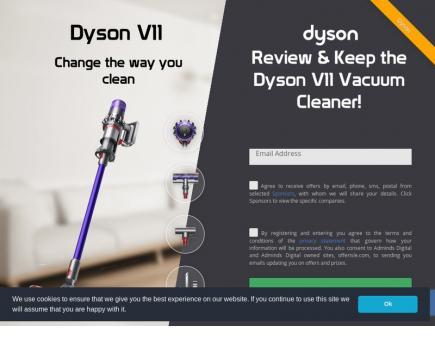
Affiliate marketing is thus an innovative way to grab the most eyeballs for your latest releases.
Marketing Campaigns: Vitality for Businesses
There is no set-in-stone rule about marketing campaigns. Some businesses choose to run adverts in a single city for the local demographic, so if the launch deems unsuccessful, they can take the product down after a few weeks.
It is important to remember that all advertising resources cost money from heavy investment by the upper management. However, for each investment you make, the return is fantastic benefits like increasing sales, lead generation, establishing a brand image, and reducing the impact of negative publicity.
When the stakes are this high, you obviously cannot go from simplified business goals to running an international ad campaign without a watchful eye on the protective investment. The keen check-in belongs to the campaign manager as well as your finance partners.
Evaluating Your Strategy
Once you have successfully carried out a marketing campaign, take a breather and look back. It is crucial to assess the hits and misses during the extensive process. Companies should compare their ROIs with the goals they had set at the beginning of implementation. The strategy’s most valuable parts should be highlighted and documented for future reference in the case of plans met.
However, in the unfortunate event of your brand’s marketing campaign failing to meet its goals, an in-depth analysis of the marketing strategy, implementation, and reception should be carried out, so such gaps are filled for future schemes. To avoid an irrevocable investment loss, test runs are vital before a full launch of the marketing campaign.
The world is vast and digital marketing is challenging to probe but, once implemented smartly, can bring immeasurable benefits to your business. With the growing trends in technology, digital marketing is on the upward spiral, and any budding brand looking forward to staying relevant must eventually follow suit.



